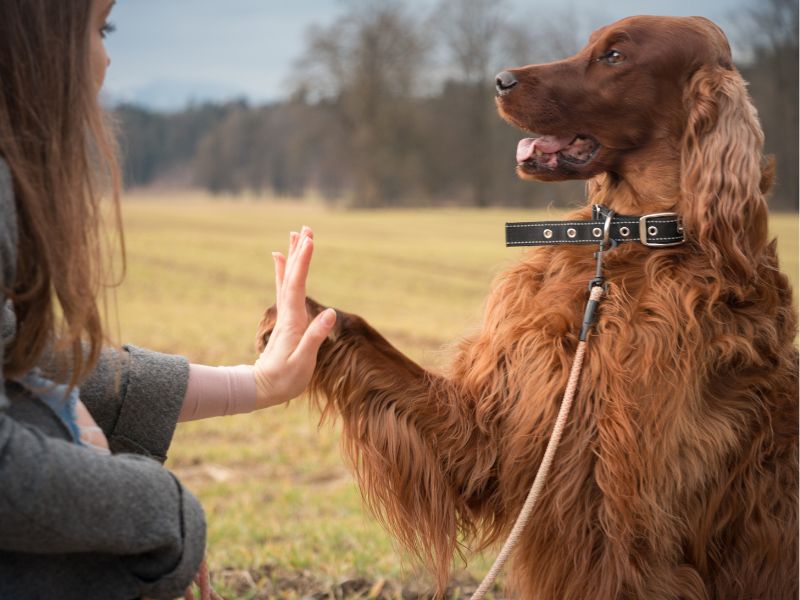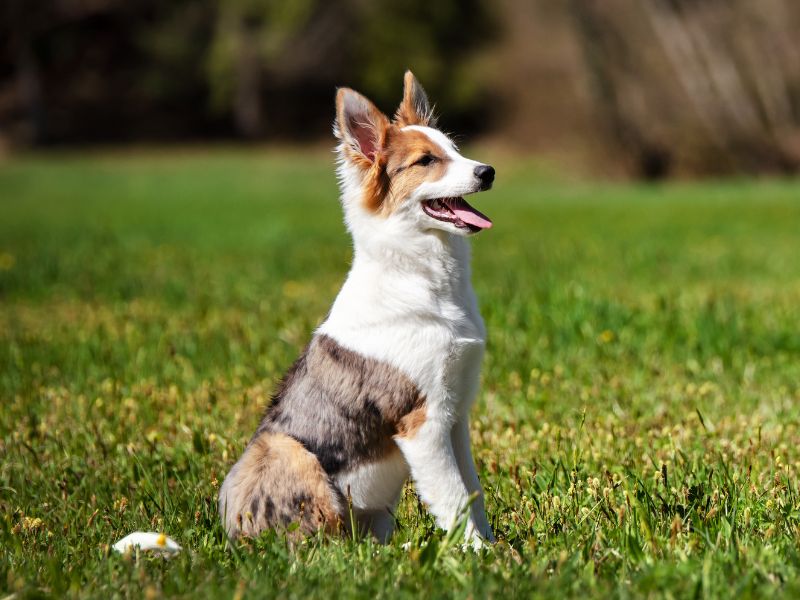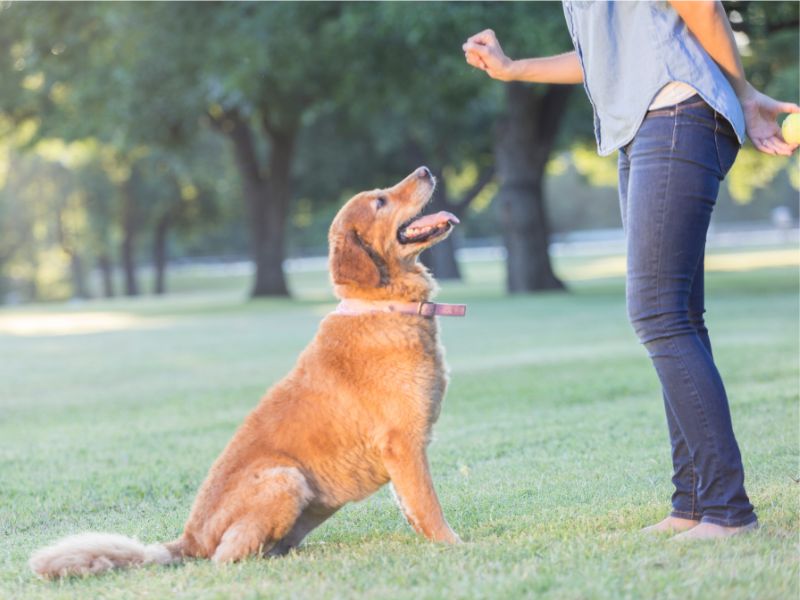Dogs are an incredible addition to any family, but they need to be trained to ensure a happy and healthy relationship between pet and owner. Teaching them basic commands such as “stay” and “come” can be challenging, but it’s essential for their safety and your peace of mind. In this guide, we’ll explore some effective techniques for teaching your dog these essential commands. From positive reinforcement to consistency, we’ll cover all the key strategies to make training your dog an enjoyable and rewarding experience.
The Importance of Teaching Your Dog Basic Commands
Teaching your dog basic commands is not only important for their safety, but it also helps to establish a strong bond between you and your furry companion. Training your dog also helps to reduce bad behavior and can make them more social and obedient. Basic commands such as “stay” and “come” are crucial for your dog’s safety, especially when out in public or around other animals.
It’s important to remember that just like humans, dogs have different personalities, characteristics, and learning abilities. Therefore, it’s essential to understand your dog’s behavior to determine the best way to train them. Consistency is key when it comes to training your dog. Ensure that everyone in your household is aware of the training techniques and uses the same commands to avoid confusing your dog.
Understanding Your Dog’s Behavior and Learning Capacity
Before you start training your dog, it’s important to understand their behavior and learning capacity. Dogs are intelligent animals and can be trained, but they have their limitations. The first step is to establish a training schedule that works for both you and your furry friend. Dogs have a short attention span, so it’s best to keep training sessions short, preferably between 10 to 15 minutes.
It’s essential to be patient with your dog as they learn. You must teach them one command at a time and allow them to master it before moving on to the next one. Some dogs may take longer to learn than others, and that’s okay. Be positive and consistent with your training, and your dog will eventually learn the commands.

Basic Commands to Teach Your Dog – “Sit,” “Stay,” and “Come.”
There are several basic commands that every dog should know, but we’ll focus on “sit,” “stay,” and “come.” These commands are essential for your dog’s safety and obedience.
Sit
The “sit” command is one of the first commands you should teach your dog. It’s a simple command that you can use to get your dog’s attention before moving on to more advanced commands. To teach your dog this command, follow these steps:
- Hold a treat close to your dog’s nose.
- Move the treat up, causing your dog’s head to follow it and their backside to lower.
- Once your dog is in a sitting position, say the word “sit” and give them the treat.
- Practice this command several times a day until your dog can sit without the treat.
Stay
The “stay” command is crucial for your dog’s safety. It teaches them to stay in one place until you tell them to move. To teach your dog this command, follow these steps:
- Ask your dog to “sit.”
- Open your palm in front of you and say “stay” while taking a step back.
- If your dog stays in place, give them a treat and praise them.
- Gradually increase the distance and time your dog stays in place.
Come
The “come” command is essential for calling your dog back to you when they’re off-leash or out of sight. To teach your dog this command, follow these steps:
- Put a leash on your dog and let them wander a few feet away from you.
- Say your dog’s name followed by “come” while gently pulling on the leash.
- When your dog comes to you, give them a treat and praise them.
- Practice this command frequently, gradually increasing the distance between you and your dog.
Positive Reinforcement Training Techniques
Positive reinforcement is an effective training technique that involves rewarding good behavior. It’s essential to use a treat or praise immediately after your dog performs the desired behavior. This method helps to reinforce the behavior, making it more likely to be repeated.
Avoid punishing your dog for bad behavior. Instead, use positive reinforcement to teach them what you expect from them. For example, if your dog jumps on you, ignore the behavior and turn away until they calm down. Then, praise and reward them when they behave calmly.
Training Tools and Equipment
Training tools and equipment can make the training process more comfortable and effective. Some of the most commonly used training tools include:
Treats
Treats are a great way to reward your dog when they perform the desired behavior. Use small, soft treats, and avoid giving your dog too many treats as they can lead to weight gain.
Clicker
A clicker is a small handheld device that makes a clicking noise. It’s used to mark good behavior, making it easier for your dog to understand the desired behavior.
Leash and Collar
A leash and collar are essential for controlling your dog during training sessions. Ensure that the leash and collar are appropriately fitted to avoid causing discomfort to your dog.
Common Mistakes to Avoid While Training Your Dog
Training your dog can be challenging, but it’s essential to avoid making these common mistakes:
Inconsistency
Inconsistency in training can confuse your dog and make it more challenging for them to learn. Ensure that everyone in your household is aware of the training techniques and uses the same commands.
Punishing Bad Behavior
Punishing your dog for bad behavior can cause anxiety and fear and make it more challenging to train them. Instead, use positive reinforcement to teach them what you expect from them.
Training for Too Long
Dogs have a short attention span, so it’s essential to keep training sessions short, preferably between 10 to 15 minutes.
Troubleshooting Training Challenges
Training your dog can be challenging, and it’s normal to experience some challenges along the way. Here are some common training challenges and how to overcome them:
Biting or Nipping
If your dog bites or nips during training, stop the training session immediately and ignore them for a few minutes. Resume training when they calm down.
Not Responding to Commands
If your dog doesn’t respond to a command, don’t repeat it. Instead, go back to basics and practice the command until they understand what’s expected of them.

See Also: The Best Ways to Exercise with Your Dog
And: What Are the Best Toys for Training Your Dog?
Advanced Command Training
Once your dog has mastered the basic commands, you can move on to more advanced commands. Some of the advanced commands include:
Roll Over
To teach your dog to roll over, follow these steps:
- Ask your dog to “down.”
- Hold a treat close to their nose and move it towards their shoulder.
- As your dog’s head moves towards the treat, their body will follow, causing them to roll over.
- Say “roll over” and give them a treat.
High Five
To teach your dog to give you a high five, follow these steps:
- Hold a treat close to your dog’s nose.
- Raise your hand slightly, and your dog will naturally lift their paw.
- Say “high five” and give them a treat.
Best Practices for Maintaining Your Dog’s Obedience Skills
Maintaining your dog’s obedience skills is essential to ensure a healthy and happy relationship between pet and owner. Here are some best practices for maintaining your dog’s obedience skills:
Practice Regularly
Practice the commands regularly to reinforce the behavior.
Use Commands Consistently
Ensure that everyone in your household uses the same commands to avoid confusing your dog.
Keep Training Fun
Training should be a fun and enjoyable experience for both you and your dog. Use positive reinforcement and treats to keep your dog engaged.
Conclusion
Teaching your dog basic commands like “stay” and “come” is crucial for their safety and your peace of mind. Understanding your dog’s behavior and learning capacity is essential to determine the best way to train them. Consistency and positive reinforcement are key when it comes to training your dog. Use the right tools and equipment, avoid common mistakes, and troubleshoot any challenges that may arise. With patience and practice, your furry companion will master these essential commands, making them a joy to be around.

